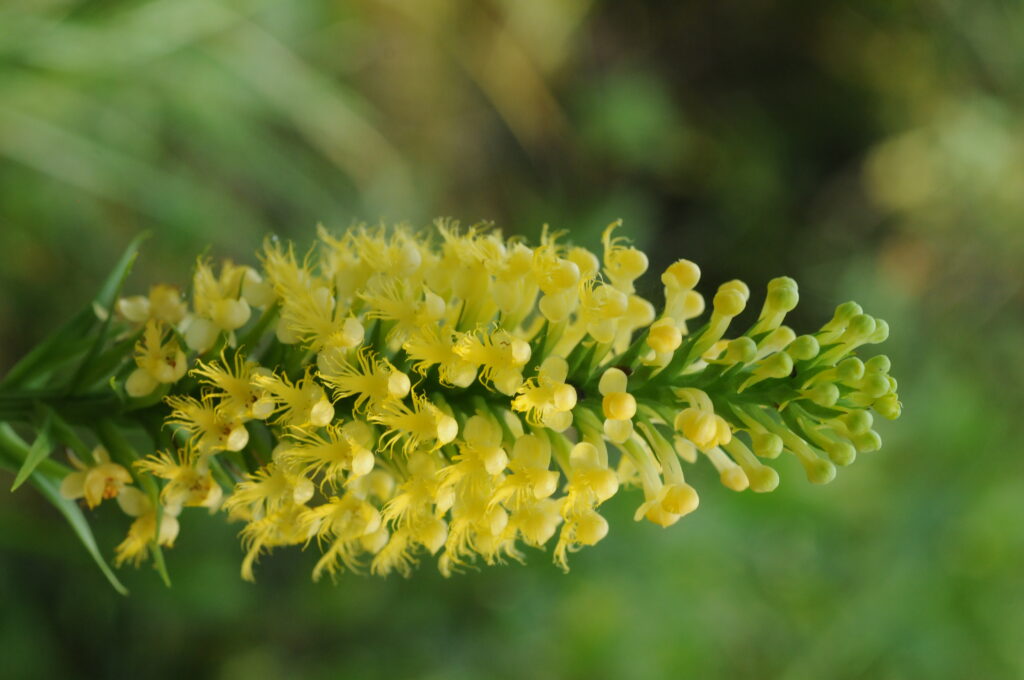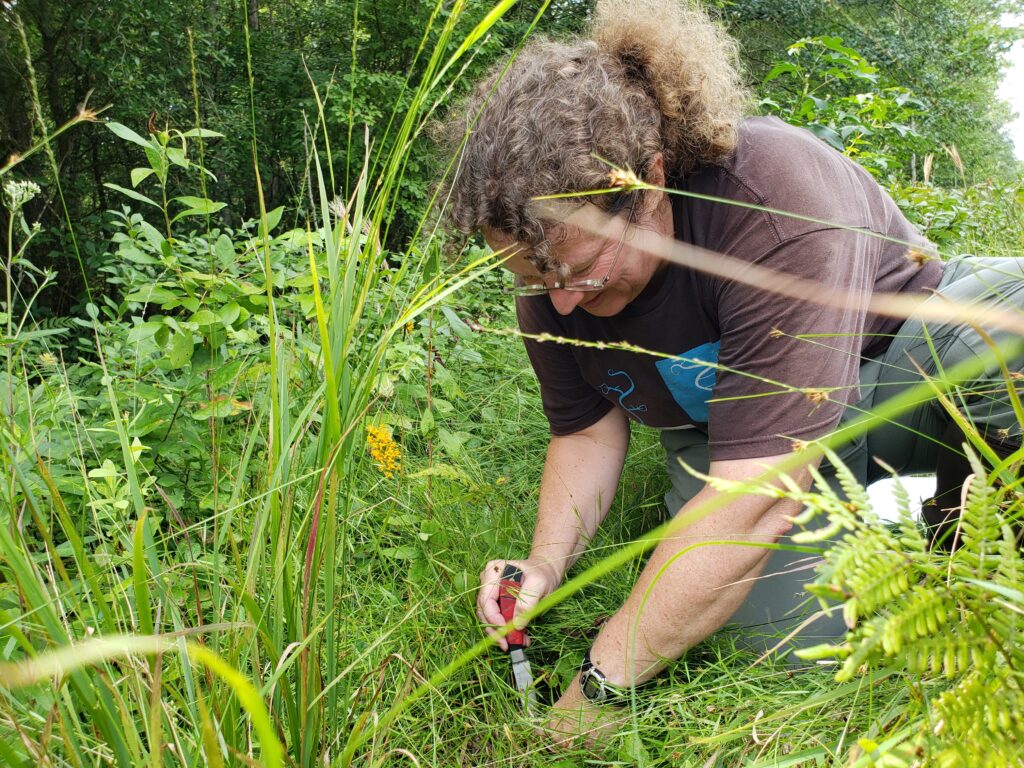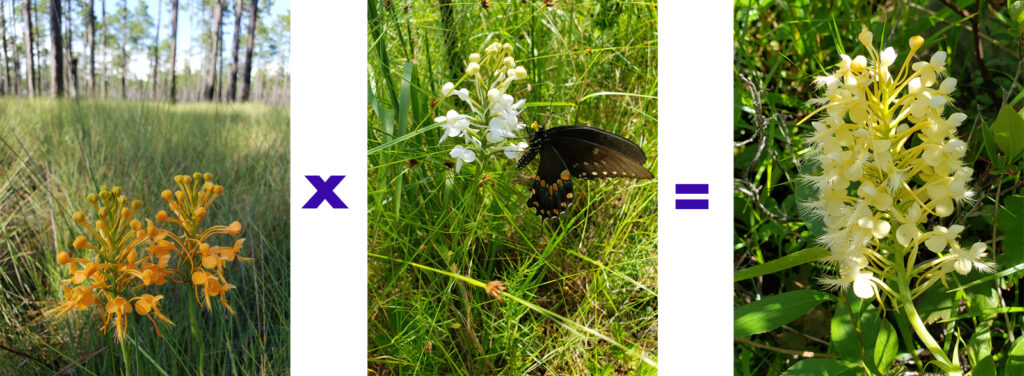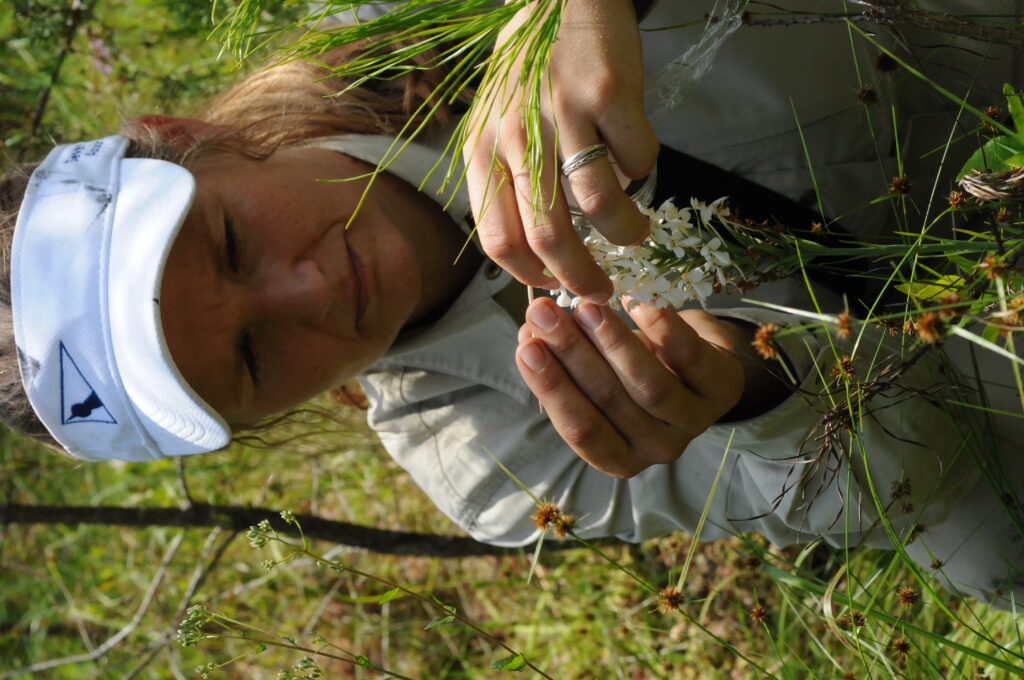
The hybrid orchid Platanthera canbyi forms when the White Fringed Bog Orchid crosses with the Crested Orange Bog Orchid. (Credit: Melissa McCormick)
by Aliya Uteuova
This article is part of a series of posts highlighting research the Smithsonian Environmental Research Center (SERC) is continuing to do amid the COVID-19 pandemic. Learn more about SERC’s work to conserve threatened and endangered orchids by visiting the North American Orchid Conservation Center website.
When it comes to orchids, delicate, rare flowers with striking colors and shapes might come to mind. But did you know orchids make up 10 percent of the world’s flower species? With roughly 30,000 known species, they grow on all continents but Antarctica, ranging from the tropics to north of the Arctic Circle.
Orchids grow on soil, on trees and even on rocks. And like so many plant species in the world, orchids are vulnerable to habitat loss. While they can grow wherever there are fungi, the key is to have the right fungi.
“While we tend to think of fungi as bad and associate them with fungal infections, here’s this beautiful plant that turned the tables around,” said Melissa McCormick, principal investigator at SERC’s Molecular Ecology Lab.
Fringed Orchid Science

Melissa McCormick samples a root of Platanthera cristata, the Crested Orange Bog Orchid (Credit: Simone Evans)
Orchid seeds are tiny and dust-like, utterly devoid of the starchy material that helps them feed new sprouts. To survive the early stages of life, all orchids form symbiotic relationships with fungi. But this relationship, it turns out, is extremely one-sided. Orchids digest the fungi that grow into their roots, absorbing their nutrients and giving nothing in return. Orchids do, however, play a vital role as indicators of environmental health.
“When the plant habitat starts changing, orchids are usually the first ones to go,” McCormick said.
This year, McCormick and her team are looking at orchid hybrids to better understand how fungi influence orchid diversity, and how orchids adapt to new environments. They’re focusing on naturally occurring hybrids of the widespread Platanthera genus, more commonly known as bog orchids or fringed orchids. These studies may help predict which species and populations will be most vulnerable to environmental change.
Hybrids can form when two species of closely related orchids grow close together and flower at the same time. Sometimes, a pollinator carries pollen of one orchid to flowers of the other and they form hybrid seeds. Usually their flowers look like a mix of the two parent species.
Hybrids sometimes grow in habitats like those of their parent species. But hybrids can also grow in places where their parents cannot. Of the Platanthera species McCormick and her team are studying, three hybridize with each other to form three new hybrids. For example, the Orange Fringed Bog Orchid and the White Fringed Bog Orchid hybridize to form the Bicolor Bog Orchid. They’re also looking at two species of purple fringed orchids that can hybridize with a green fringed orchid.

When the Orange Fringed Bog Orchid (left) crosses with the White Fringed Bog Orchid (center), they form the natural hybrid Bicolor Bog Orchid (right). (Photos: Melissa McCormick)
Hybrids in Hiding
Hybrids, because they’re so unique, are in high demand among plant collectors and gardeners. But with their rarity comes the challenge of locating Platanthera hybrids.
“Some people go and dig up the hybrids and so they disappear,” McCormick said. “People can be pretty secretive about them. Good luck getting them to tell you where they are.”
To find more orchids, SERC is collaborating with the Atlanta Botanical Garden. The scientists are collecting orchid and fungus samples from Maryland, New Jersey, Pennsylvania, and North Carolina.
“Geographic variation can tell us a lot about the genetic flow, and whether there’s hybridization in one area over the other,” said Ida Hartvig, a postdoctoral fellow in McCormick’s lab. A native of Denmark, Hartvig’s two-year research in the U.S. is funded by the Carlsberg Foundation.

Ida Hartvig hand pollinates the orchid Platanthera blephariglottis, the White Fringed Bog Orchid, to create a hybrid orchid. (Credit: Melissa McCormick)
For Hartvig, orchids stand out because of their fascinating—and sometimes deceptive—pollination system. Bee orchids mimic the shape and scent of female bees to attract male bees, who pollinate them. Normally plants have a reward in the form of nectar, but that’s not always true with orchids, even the sweet-smelling ones.
Hartvig is chasing orchids across state lines, bringing leaf and root samples into the SERC lab. She then dissects the orchid roots to extract small balls of fungal tissue called pelotons.
Her goal is to identify the fungi’s DNA barcodes and attempt to cultivate them. Knowing which fungi the orchids need will be key to conserving the flowers. Meanwhile, the scientists also pollinated the orchids by hand to create hybrid orchid seeds, and then introduce Hartvig’s extracted fungi to test whether the fungi could spur the orchids to grow.
“I hope this research will contribute to better conservation plans for threatened species,” Hartvig said. “Understanding the requirements for orchid habitats could help sustain viable populations in the future.”
More Research During COVID Stories:
Plastic Cleanup Expedition Helps Research Stay Afloat During Pandemic
Repurposing Nature To Restore The San Francisco Shoreline
Carbon Sensors During A Time of Coronavirus
TEMPEST Experiment Mimics Future Storms Inside Forests
How the “Blue Methane” Team Used COVID Restrictions To Get More Data Than Ever
More Orchid Stories:
Orchid, Fungi and Bacteria Relationships: “It’s Complicated”
DNA Offers New Hope for Saving Orchids
“Orchids In Classrooms” Turns Sixth-Graders Into Citizen Scientists
What Would Orchid Do? 7 Life Lessons from the Plant Kingdom

